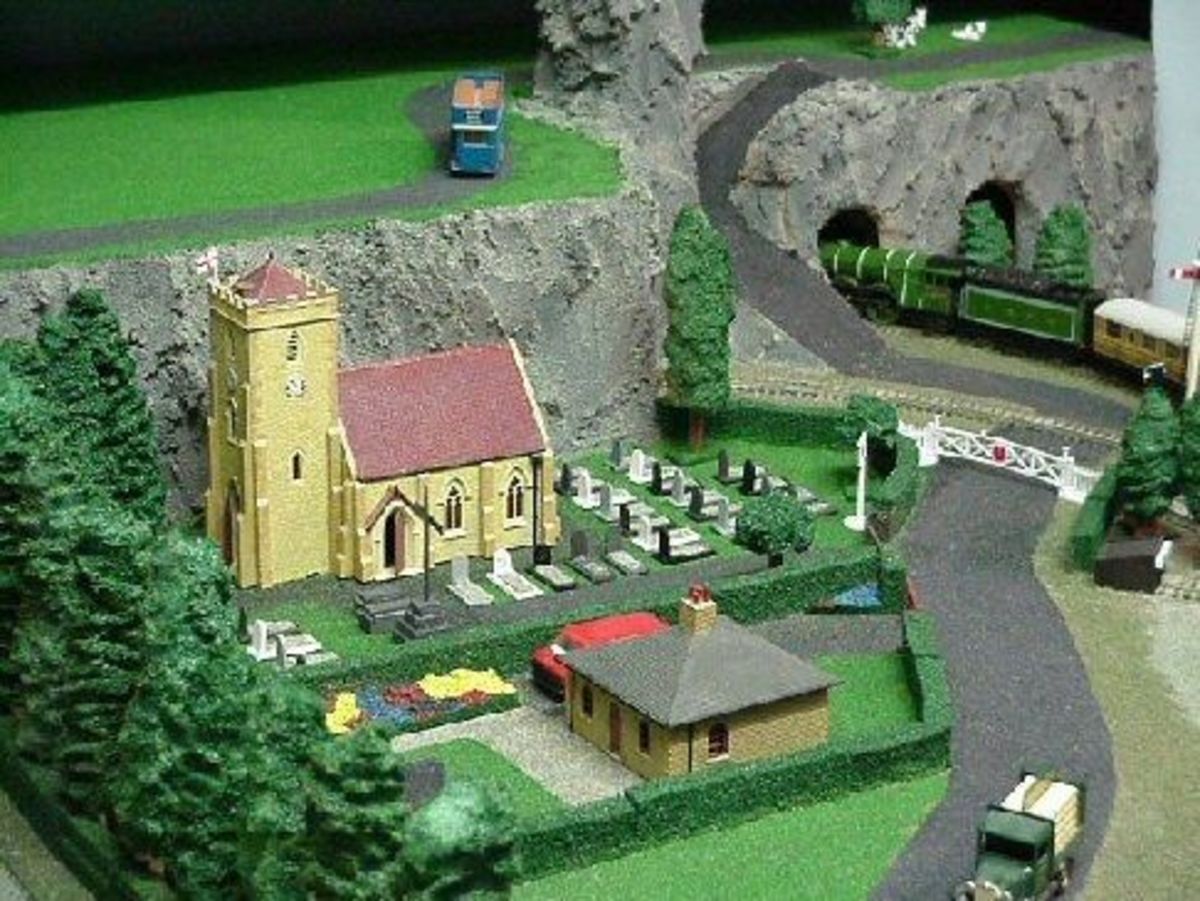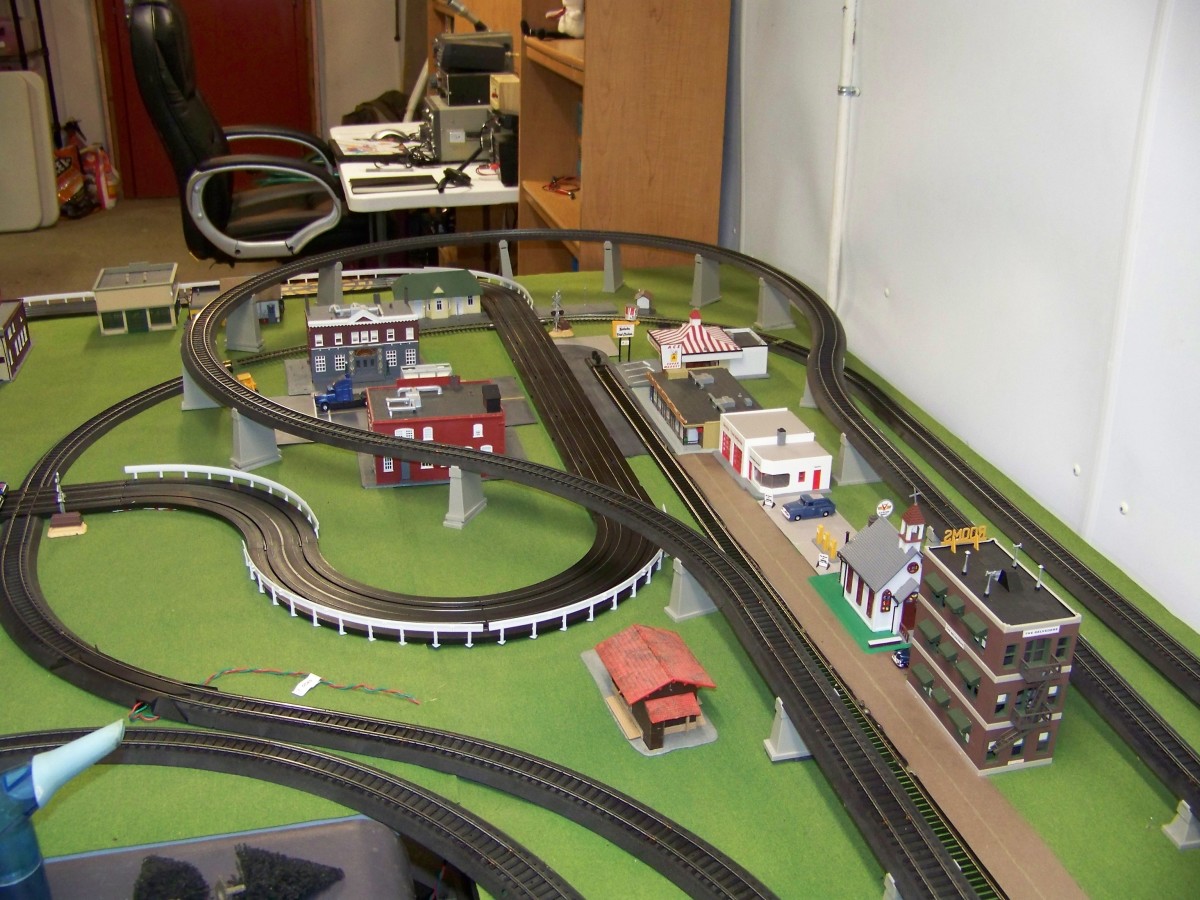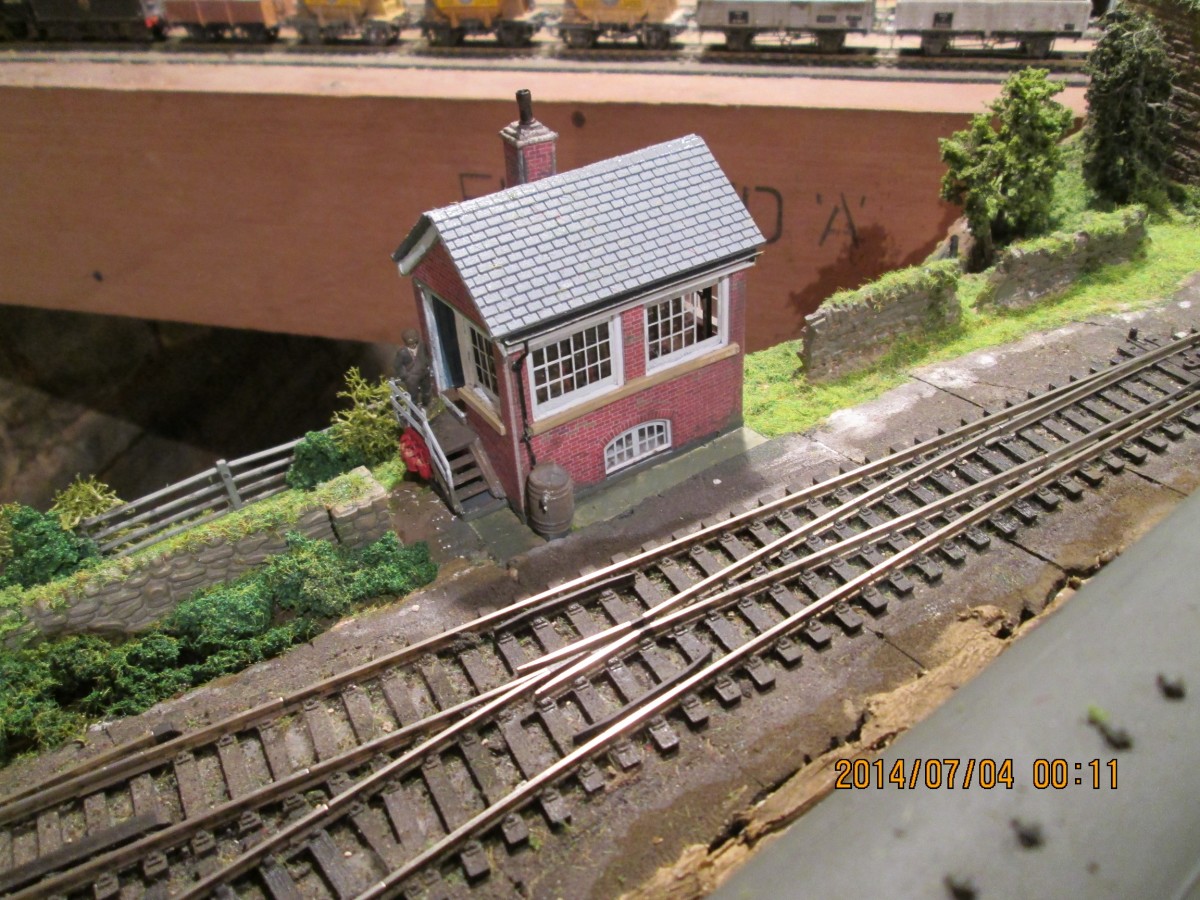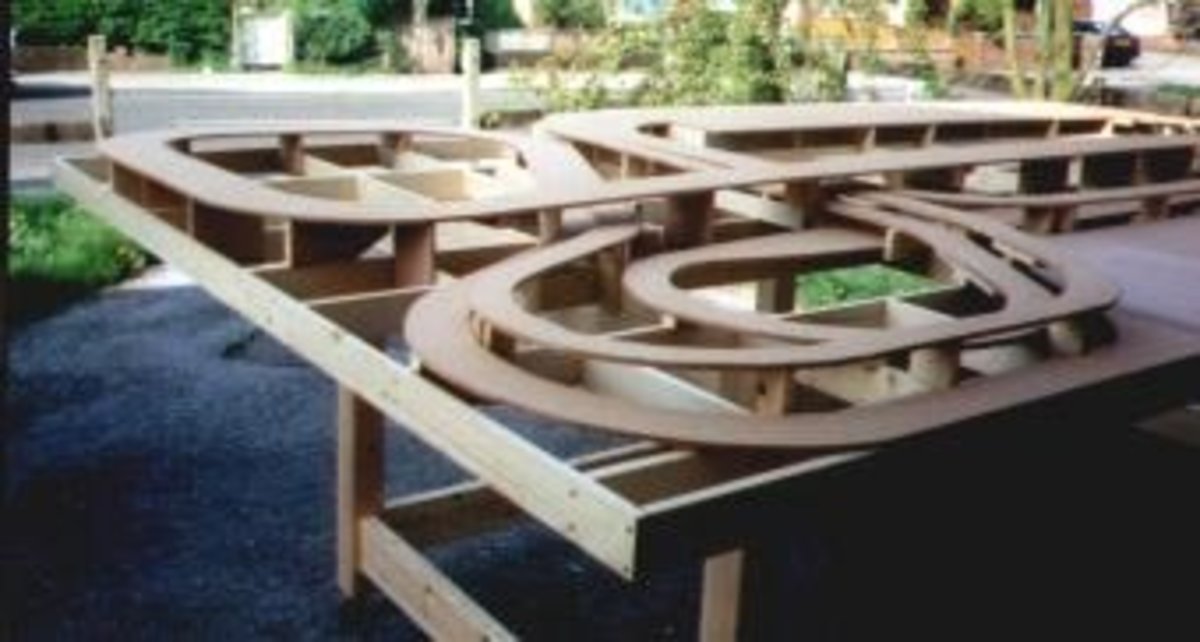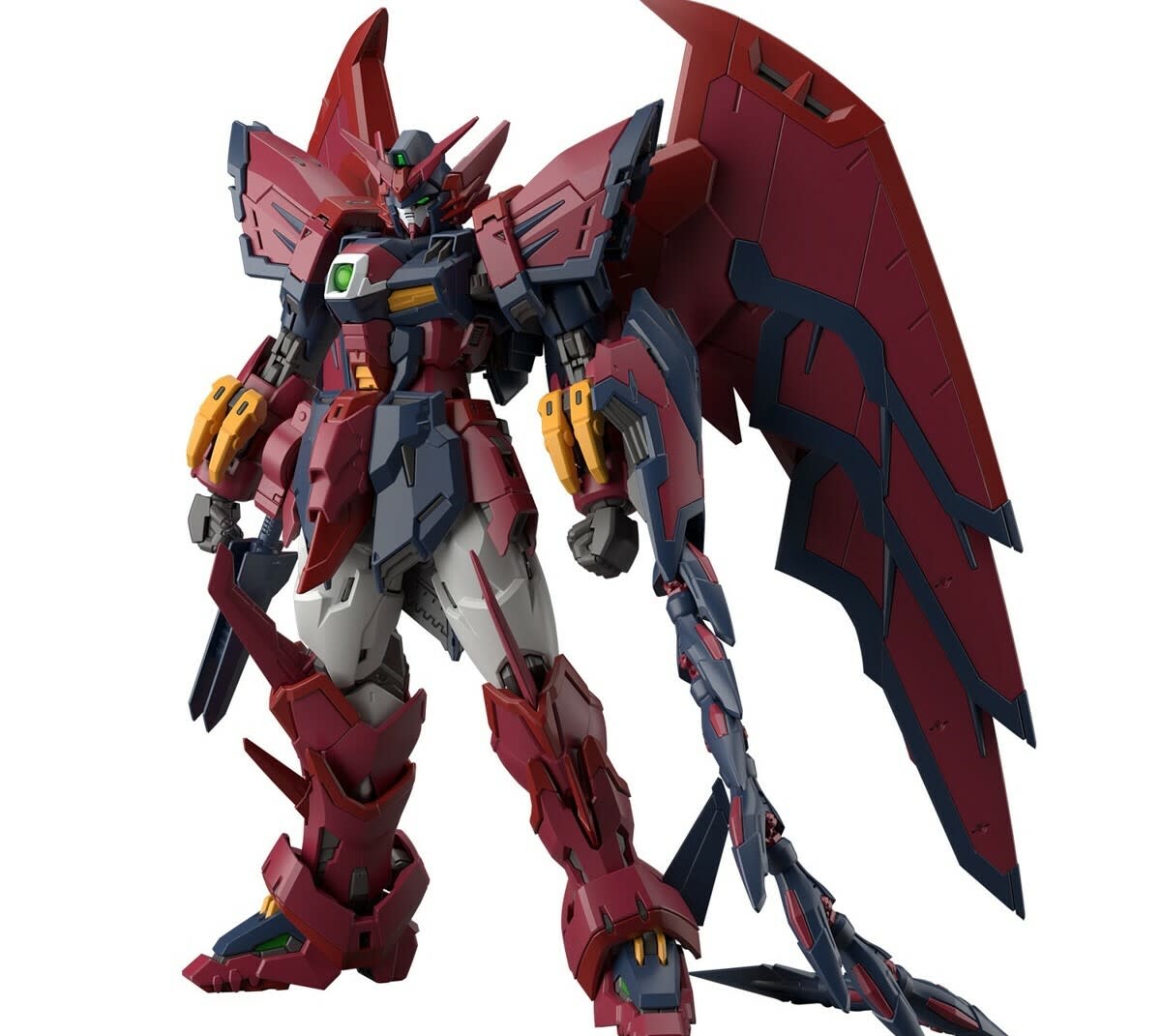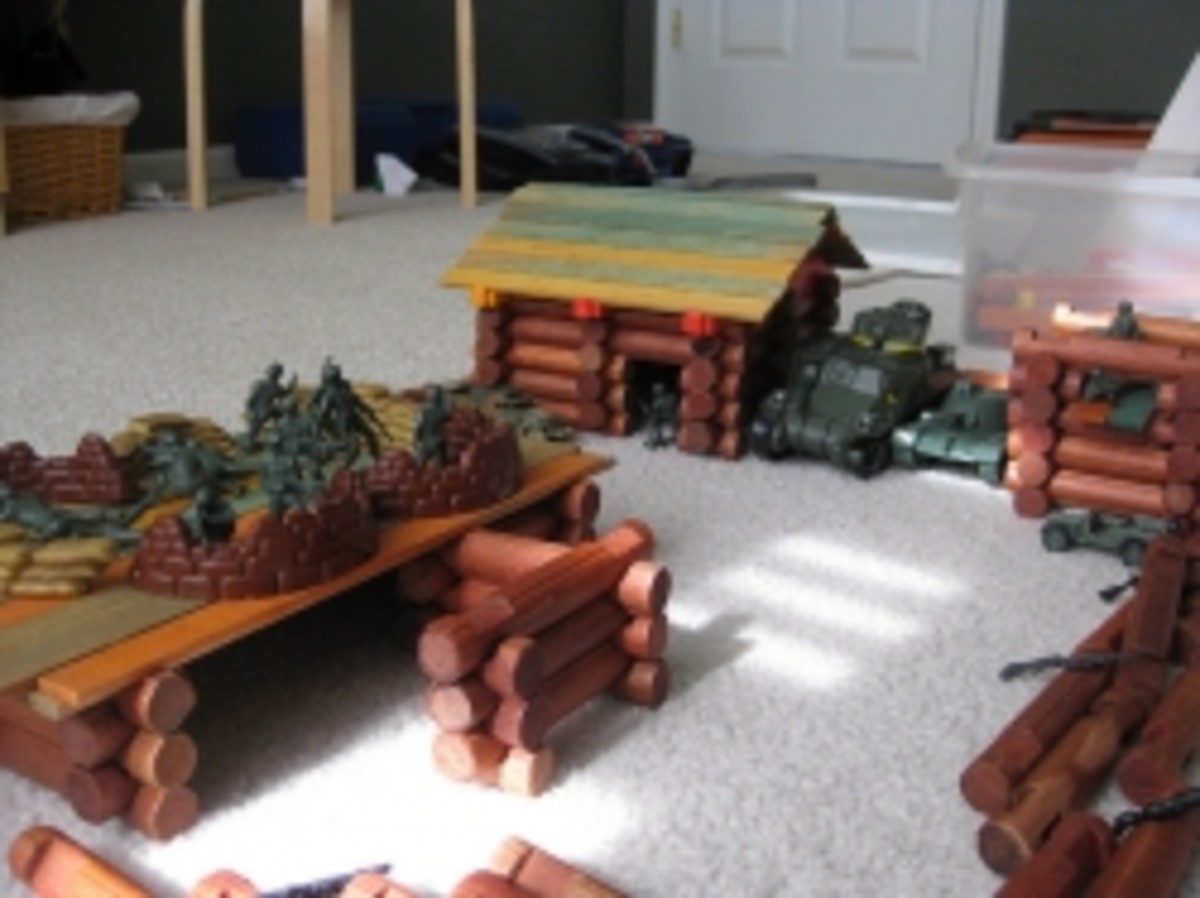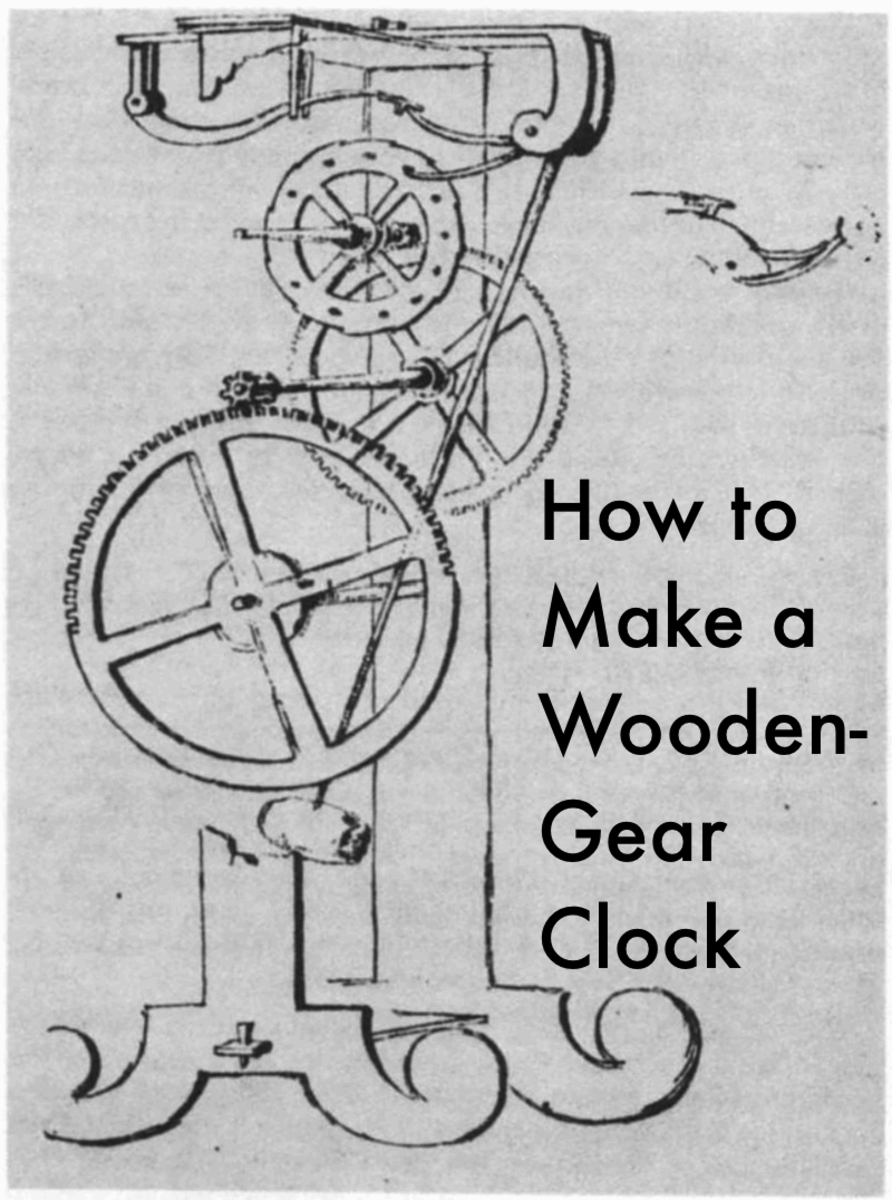How To Properly Weight An HO Rolling Stock Train
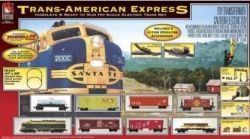
I needed a hobby to take my mind off of the stress from work and decided to take up model railroading. I remembered how much joy playing with model trains gave me when I was growing up. I went on Amazon and did some research and finally decided on a Like-Like Trans-American Express train set made by Walthers. This set came with an EMD 7 locomotive, several rolling boxcars, a tanker, and a caboose that fit into the 1950s era which is what my train layout is going to be modeled after.
Setting Up The Track
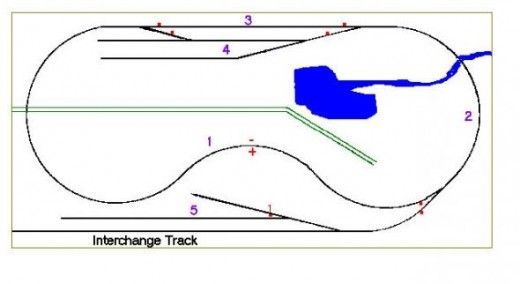
I temporarily set up track using the Power-Loc track system included in the train set. The setup was a double oval layout and used manual turnouts to switch the train from the outer loop to the inner loop. This was all fine and good but the track layout was boring and the Power-Loc track did not look authentic enough for me. I then went to a local hobby shop and purchased Atlas Code 100 track and set it up in the following layout.This layout is offered under the beginners section on the National Model Railroad Association (NMRA) site.
The "frog" of a turnout track section
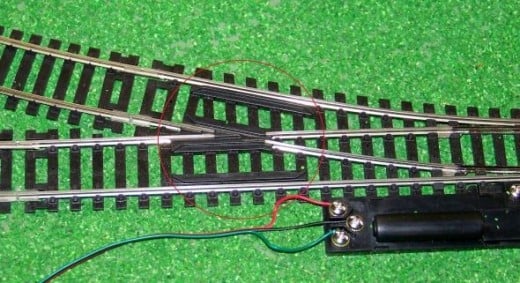
This was great track layout that allowed me to switch between operating locomotives on the main line and the branch lines at the same time. The only problem was that I was having enough train derailments that would even make Amtrak blush!Two things I came to recognize:1. The locomotive never derailed, even at top speed.2. The derailment of rolling stock cars always started at one of the turnouts.I then proceeded to slowly pull a series of rolling stock cars around the track looking for the reason to the derailments. I soon discovered that the rolling stock cars slightly "hop" when transitioning from a rail to what is know as the "frog" of one of the turnout sections of track. Circled above is the "frog" of a turnout track section.
The little "hop" while transitioning to the "frog" problem
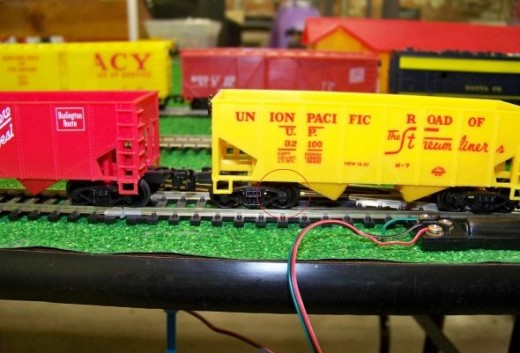
At first I thought that one of my Atlas turnout tracks was defective but soon I discovered that the wheels of rolling stock did this little "hop" when transitioning from the track to "frog" at all of my turnout tracks. Above, circled in red, is a rolling stock car doing the little "hop" while transitioning to the "frog".
Starting to fix the problem
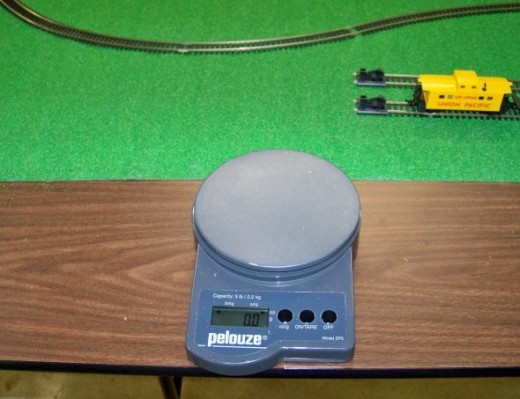
So now I was thinking, why are the rolling stock cars derailing due to this "hop" and not the locomotive. While picking up both a locomotive and the boxcar it came to me. The locomotive was much heavier then the boxcar. I soon discovered that all of the rolling stock cars where much lighter than the locomotive. So I then proceeded put some nuts and bolts in a boxcar till I through it was sufficiently heavier. I then connected the boxcar to a locomotive and ran it at top speed around the track. The boxcar no longer derailed!After doing some research, I came across this web page on the National Model Railroad Association (NMRA) site which instructs you on how to determine the correct weight of your rolling stock car:I dug out my wife's old letter scale that she used to determine weight of packages to be mailed.
Postal scale used for weighing rolling stock
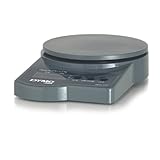
Wheel Weights
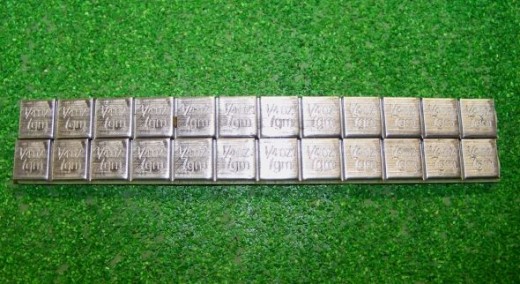
According to the Weighting Rolling Stock page on the NMRA site, the formula for HO scale is an initial weight of one ounce plus an additional half ounce for each inch of car length. For example, the appropriate weight of a 7 inch HO boxcar should be 4.5 ounces 1 + (7 x 0.5) = 4.5 ouncesIn order to add weight to the rolling stock, I decided to use self-adhesive ounce wheel weights used in the auto industry. These weights can be obtained at places like the Amazon web site. Above is a picture of the wheel weights.
Stick on wheel weights used to properly weigh rolling freight

Weighting Your Train
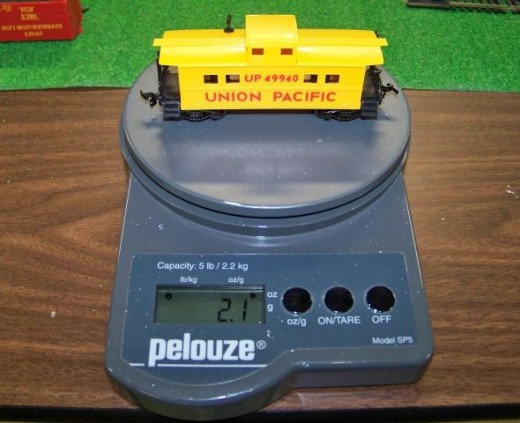
Caution: Self-adhesive wheel weights used to balance wheels are made of lead, you should wash your hands after handling them and do not allow children to handle these weights. If children are going to play with the rolling stock cars then I recommend using some other means of adding weight to the rolling stock cars.The first thing you do is determine the initial weight of the rolling stock car. For example my caboose was 2.1 ounces. See picture above.
Determining the NMRA recommended weight of the caboose
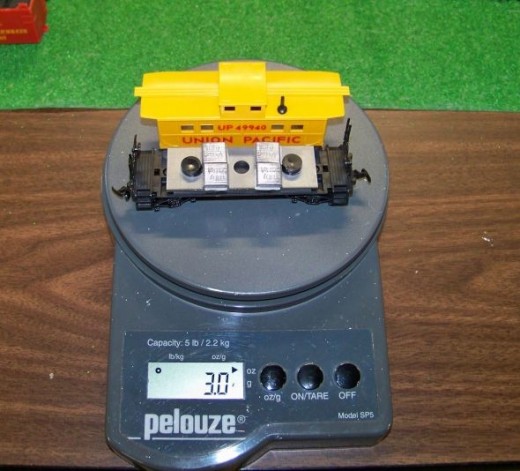
Next you need to determine the NMRA recommended weight of the caboose. The caboose is four inches long so the formula would be 1 + (4 x .5) = 3 ounces this is what the total weight of the caboose should be.Next you remove the top of the caboose and place all parts of the caboose on the letter scale. Then you add the once self-adhesive wheel weights until the total weight is the recommended NMRA weight, for the caboose it is 3 ounces. I recommend placing the ounce weights over the trucks. See picture above.
Sometimes you need to drill...
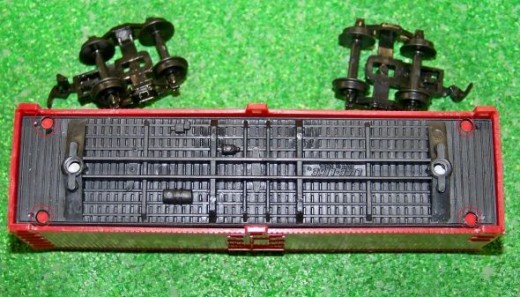
Some brands of rolling stock cars are glued together, you will need to drill out where the top and bottom of car attaches so that you can add the proper weight. See the four circled areas in the picture above.
Other types of rolling stock cars
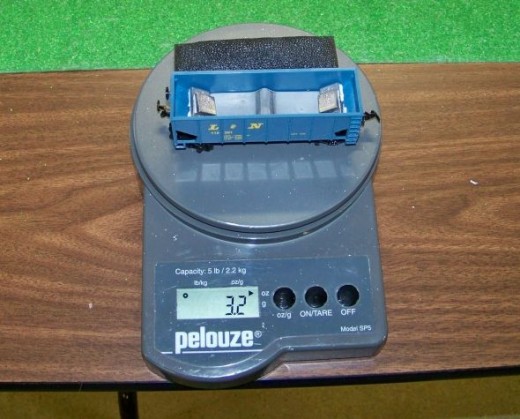
Above is another picture of the placement of ounce self-adhesive wheel weights in another type of rolling stock car.Now that you added the proper weight to your rolling stock cars, you can enjoy hours of model railroading minus those pesky derailments!
Helpful Link!
- NMRA - Introduction To Model Railroading
Welcome to the NMRA's "Introduction To Model Railroading" web pages. These web pages have been put together by the NMRA. to introduce people to model railroading. Our goal is to help those who are interested in building a model railroad but who have
Model Train Sets I Like!
I like all of these model train sets and eventually they will be part of my collection.
Recommended Reading
All of these recommended books are part of my model railroading library. I reference them often!




